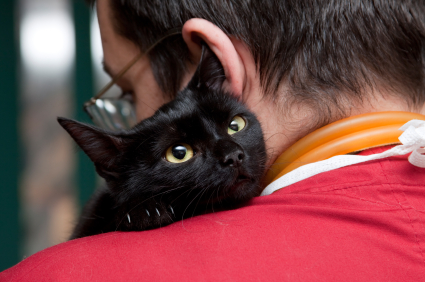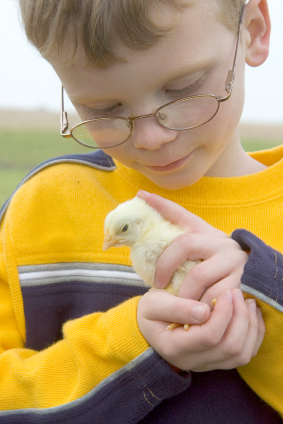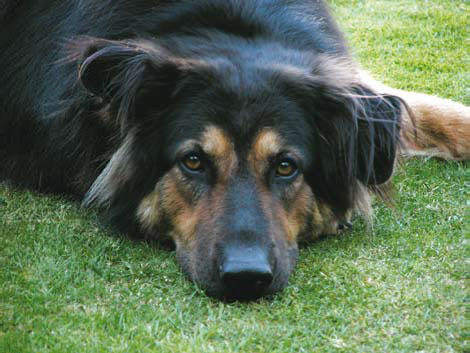
When Philippa Copleston-Warren was diagnosed with diabetes at the age of ten, she was determined not to let the condition hold her back. Here, she reveals how tiny Yorkshire Terrier Poppy and the charity Medical Detection Dogs have helped her lead a full and independent life …
This is an extract from an article which appears in the Spring 2011 issue of the SCAS Journal.
I was diagnosed with Type 1 diabetes at the age of ten and suddenly I was different – no one else in my family or school had diabetes. Having previously been the captain of many school sports teams, I was made to sit on the sidelines as teachers didn’t know what to do if I became hypoglycaemic. Low blood sugar can lead to symptoms ranging from confusion and disorientation to unconsciousness and life-threatening seizures.
Unfortunately there were never any warning signs – my friends would ask me if I was OK and I would say I was fine until I passed out. One minute I was seen as sharp and clever at school; the next confused and unclear. In exams I would do really well on the first half of papers but towards the end my writing had often become illegible and the content incoherent.
This carried on throughout school and university, until I was diagnosed with borderline Addison’s disease aged 19. Addison’s is an adrenal disease and temperature changes, hormones, glucose and sucrose greatly affect my adrenaline and subsequently my blood sugar very quickly.
A high flyer feeling low
I did not want my conditions to hold me back as I loved travelling and during my early career enjoyed working in high-powered jobs. At university I worked at Saatchi and Saatchi and after finishing my degree went to into Business Strategy and Change Management Consulting with one of the largest consulting firms. People would be amazed how I would give a great presentation one minute and an appalling one the next. I managed my blood sugar as well as I could,but still it was uncontrollable at certain times. At various points in my career I was found unconscious by friends, colleagues and strangers all round the world – from firemen in Los Angeles to a dustman in London.
After eight years consulting I took a desk job at a large international oil company. However, travelling to my office in Canary Wharf was difficult due to the continued sudden onset of hypoglycaemia. Often when I had low blood sugar I was pushed, shoved, stepped on and nudged by other commuters, causing me to fall over and suffer several injuries. Many people were more interested in getting to their work than helping someone.
Enter Poppy …
It was at this point in my life that I decided to ‘retire’ from the city and work from home – I am now a school Governor and also have my own business. I also made the life changing decision to get a dog, to keep me company. Poppy, a blue and tan Yorkshire Terrier (pictured with me, above right), came to live with me as a puppy, and while she never wanted to leave my side, there were certain times when she would not come near me. She would get very anxious and bark or run. After watching her behaviour closely, my husband said to me: “She is reacting to your blood sugar – have you got low blood sugar?” and 100% of the time he was right. When he first said that to me I would ignore him but then I heard about the charity Medical Detection Dogs.
Medical Detection Dogs train and place specialist dogs who alert their owners prior to a medical emergency. These dogs help people of all ages across the UK who are living with life-threatening health conditions such as Addison’s disease and diabetes. The charity agreed to assess Poppy and, after seeing her brilliant alerting behaviour, agreed to help train her to alert me in more appropriate ways. The training took several months and involved training me, as much as Poppy!
 Because Poppy is a small dog she is not as interested in food as big dogs, so I really had to learn how to reward her with attention. Poppy (like other Medical Alert Dogs) was trained to recognise low blood sugar levels, as these levels give off a different scent compared with blood sugars that are within the normal range. Dogs can be taught to alert their owners in a variety of ways, for example by barking, jumping up, licking or pawing. They will bring their owner glucose and blood testing kits, and get help if necessary. They can even be trained to push alarm buttons. general public benefits from dogs like Poppy too, through the reduced cost of NHS care and hospital admission.
Because Poppy is a small dog she is not as interested in food as big dogs, so I really had to learn how to reward her with attention. Poppy (like other Medical Alert Dogs) was trained to recognise low blood sugar levels, as these levels give off a different scent compared with blood sugars that are within the normal range. Dogs can be taught to alert their owners in a variety of ways, for example by barking, jumping up, licking or pawing. They will bring their owner glucose and blood testing kits, and get help if necessary. They can even be trained to push alarm buttons. general public benefits from dogs like Poppy too, through the reduced cost of NHS care and hospital admission.
Since becoming a dog owner, I have heard interesting stories of discrimination against dogs, and experienced some upsetting situations myself with Poppy in a supermarket, gym and at the airport. We often get told: “We only accept GUIDE dogs!” Overall there still seems to be a lack of knowledge about assistance dogs, and some large organisations that should know better do not always seem to support the Disabilities Discrimination Act.
Raising awareness

I am now on a mission to increase awareness of Medical Alert Dogs and to help other people who could benefit from these special canine companions. At the end of last year, Poppy and I attended the National Office of Animal Health (NOAH)’s Pet Event at the House of Lords (pictured), which was a great opportunity to give MPs and peers an insight into the valuable work of assistance, rescue and other working dogs’ roles. More recently, we traveled to Switzerland to give a motivational speech at Proctor and Gamble about my experiences – I think Poppy is possibly the smallest-ever assistance dog to travel around Europe!
An extraordinary dog
Back in the UK, you may also have spotted Poppy on TV, when she appeared in the sixth episode (8 March) of Channel 5’s popular 13-part series Extraordinary Dogs. If you missed it, you can catch up on all the previous episodes online at: www.five.tv/shows/extraordinary-dogs.
 Last October at a prestigious ceremony at the House of Lords hosted by Baroness Gale and Queen legend and animal welfare campaigner Brian May, IFAW proudly honoured the achievements of 10 award winners for their outstanding work to help animals.
Last October at a prestigious ceremony at the House of Lords hosted by Baroness Gale and Queen legend and animal welfare campaigner Brian May, IFAW proudly honoured the achievements of 10 award winners for their outstanding work to help animals.





